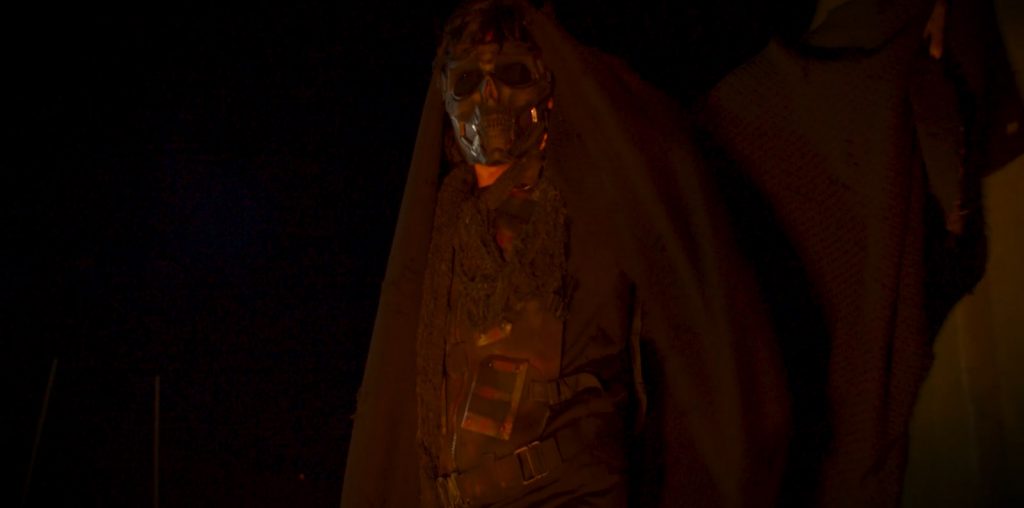
More than any screen legend, Jean Seberg represents different ideals and memories for different people. Those who were attending movies in the 1950s will recall the extensive publicity brouhaha when Seberg, a nonprofessional from Marshalltown, Iowa, was chosen over 18,000 other girls to play the lead in Otto Preminger’s 1957 film of “Saint Joan.” Serious cinephiles acknowledge Seberg’s astonishing performance in Jean-Luc Godard’s “Breathless,” which is arguably among the most influential films of all time.
Fans of old-time flicks recall Seberg as the beautiful yet unpredictable presence in such diverse productions as “The Mouse That Roared,” “Lilith,” “Paint Your Wagon” and “Airport.” And those devoted to stories of Hollywood tragedies will recall the horrendous FBI smear campaign against Seberg that resulted in her having miscarriage that ultimately wrecked her physical and emotional health (she committed suicide in 1979).
Filmmaker Garry McGee’s new biography “Jean Seberg – Breathless” (published by BearManor Media) presents a complex and often tragic portrait of an extraordinary woman whose great talent, intelligence and sincerity was never truly appreciated in her lifetime. Film Threat discussed the Seberg mystique with McGee, whose excellent book succinctly confirms the star as a woman far ahead of her time.
“Saint Joan” does not have the best reputation. But was the film truly the dud that many critics claimed it to be?? And what is your opinion of Seberg’s performance as Joan?
“Saint Joan” was a film of a stage play, and most plays do not translate well onto film. One problem was the huge publicity it received from the talent search, to rehearsals, filming, and through its premiere. Everyone expected it to be something larger than what it was. I felt Seberg received most of the criticism even though she was a teenager portraying a teenager, with doubts, insecurities, etc. Seberg always felt the director was boss and she did as she was told (though in a few instances she was allowed to develop her character with input from the director). Seberg’s Joan was Otto Preminger’s interpretation of the role, not Seberg’s. She later said she was a better actress before the cameras rolled on that film. I feel she did the best she could under the circumstances, since Preminger was known to be difficult with many of his performers.
In other films like “Breathless,” “The Five Day Lover,” “Lilith,” “The Wild Duck” and so on, Seberg shines in the roles she played. This was a result of her being left to her own interpretation in discussion with the director. In others, it’s clear the role is either underwritten or the director was telling her what to do, though she may have privately disagreed, she delivered what “the boss” wanted in her performances. And we all know “the boss” isn’t always correct.
“Saint Joan” and Seberg did have supporters, including a four star review in “Photoplay”. French critics applauded both which was the beginning of a mutual appreciation.
Why did Jean-Luc Godard choose Seberg, of all people (considering her lack of consistent box office appeal at the time), to be his leading lady in “Breathless”?
At the time, Seberg was married to Francois Moreuil and they lived in France. Moreuil was friends with a group of young filmmakers, some of which wrote for Cahiers du Cinema, which appreciated Seberg. Although both “Saint Joan” and the next Preminger-Seberg outting “Bonjour Tristesse” failed at the box office, Seberg did have a hit with “The Mouse That Roared.” She was a household name and had international recognition.
The filmmakers of “Breathless” needed such a name to broaden its appeal outside of France and the art film circuits, and Seberg fit the bill so to say. Through Moreuil, Godard met with Seberg, and after much discussion, she agreed to appear in the film.
During the production of “Breathless,” did Godard and Seberg realize they were creating a film that would literally reshape the artistic dimensions of cinema?
I can’t say what Godard’s thought were, but I would not doubt his genius. During the production, Seberg privately commented she had no idea if “Breathless” would ever be shown, but when she viewed some of the rushes, she realized they were making “something very special.” However, she had no idea it was destined for the overwhelming success it became. She was very pleased when it happened, thanks to some major American critics, including Andrew Sarris, who helped bring the film into the U.S. mainstream.
She later worked on a film short with Godard entitled “Le grand escroc,” which was a continuation of her “Breathless” character, though few have seen it (it did not appear in the recent DVD release of “Breathless”).
Many filmgoers probably know Seberg best from the 1969 musical “Paint Your Wagon.” How did Seberg, who had no background in musicals, wind up being the star of this movie?
Years earlier, Seberg auditioned for Josh Logan for the lead role in the Broadway play “There Was a Little Girl,” but the part went to Jane Fonda (who happened to be Logan’s Goddaughter). Logan wrote a wonderful letter to Seberg, praising her abilities and the hopes to work with her in the future.
When it came time to cast the lead female role in “Paint Your Wagon,” most every major actress wanted it, as the film was going to be a big production. Seberg agreed to a screen test for “Wagon” director Josh Logan and Paramount, and, coupled with her standing and box office appeal in Europe, she was offered the role.
As far as her lack of musical experience, co-stars Lee Marvin and Clint Eastwood weren’t the best singers, and Seberg’s singing was dubbed with another voice, mainly due to the Hollywood thinking at the time. But “Wagon” was meant to be a musical with “real” voices, not seasoned professionals (save for Harve Presnell, who was).
By 1970, Seberg’s popularity was strong enough for her to gain third billing (and leading lady status) in the all-star epic “Airport.” And then, all of a sudden, her career seemed to wane. What went wrong for Seberg as a movie star?
There are many theories concerning what happened, and we must be talking about her Hollywood career because in the 1970s she made a dozen films in France, England, Italy, Spain and Germany, from commercial to avant-garde, including her “Ballad for the Kid” which she conceived, wrote, produced, directed and starred, as well as had a hand in editing.
With Hollywood, Seberg was not terribly pleased with roles she had been offered, some of which, she wrote, bordered on pornography. Conversely, she was not offered great Hollywood roles regardless of size.
Some have said she was blacklisted due to the now-infamous FBI smear campaign. Others have dismissed that such a blacklist happened, yet others have no idea.
Seberg was willing to work on a Hollywood production, as she had a screenplay in which Paramount was interested in producing, but that fell through. It’s unfortunate she wasn’t in more films because she had grown as an actress, and one can’t help but think of her in some roles others got to play – and she would have been as good, if not better.
What can contemporary moviegoers learn and appreciate from Jean Seberg’s life and career?
Jean Seberg was the American girl in Paris, the symbol of the Free Spirit and part of the French New Wave which produced “Breathless,” a groundbreaking film that changed filmmaking forever. She hasn’t received the credit she is due for being part of that change, or for helping people in the film industry with their first film or granting seed money for a film project. Few “stars” do that.
She was perhaps the first American-born actress in the sound era to work on several European productions without the comforts and constraints of the Hollywood system. She popularized the short hairstyle years before Mia Farrow (who gets credit for the style).
She was sensitive and helped people in need. She could speak four languages, and dined with both presidents and revolutionaries. She was a unique and gifted performer. And for some very strange reason, she hasn’t been embraced in her birth country – let alone her home state – as she has around the world.


Great woman !
Jean has given me the reason of life. Only once in a life will another person reach deep inside your own sole and make you appreciate yourself, others and what life is. I know nothing of Jean, never had the opportunity of meeting her but for some wonderful reason of fate, I saw her in a movie. I will one day visit her grave and there, I will thank her for being a real person and for being that one special person to touch my sole. Thank you Jean, allways.